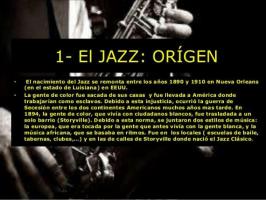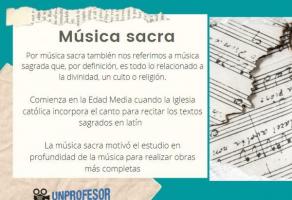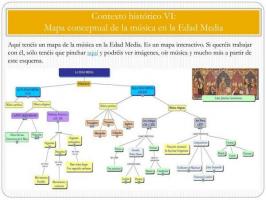Main CHARACTERISTICS of CLASSIC MUSIC
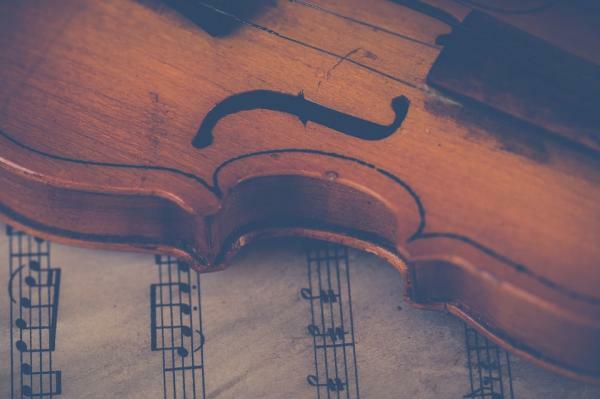
Music is an element that accompanies us practically every day. Apart from going to concerts, we listen to it when we are with friends, when we study, when we want to dance or even when we are simply going from one place to another. Thanks to technology and the period in which we live, we have an impressive number of styles and musical genres at our disposal, there is something for all tastes and occasions. Among these styles there is a prevailing musical genre Despite so much time and that it is present as an example of excellence and beauty, we are talking about classical music. In this lesson from a TEACHER we will learn about the characteristics of classical music and we will find out why it is so important.
When we call something “classic” in general, we mean something that remains and transcends through time. Classical music is centuries old and, despite that, we still continue to listen, study and perform it.
Within classical music too there are subgenres, since it covers a wide period in history, each stage with different nuances and forms of musical evolution. It occupies the approximate period
since the eleventh century, to the contemporary music of the twentieth century that maintains a technical and complex approach with previous stages.Classical music had its greatest flowering from the Middle Ages and its main characteristics were established in Europe approximately between the years 1550 and 1900.
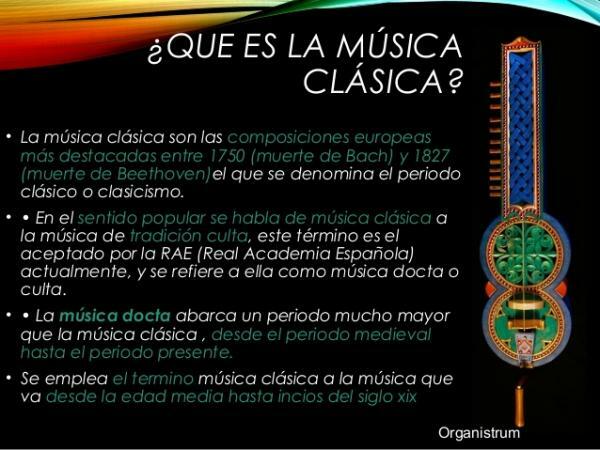
Image: Slideshare
In this lesson on the characteristics of classical music it is important to know the most prominent names in this musical genre. Since classical music developed in Europe, the most influential authors of the genus belonged to this area or its peripheries. The countries with the most relevant authors were Austria, Hungary and Germany (which were involved in political movements of empires), France, Italy and Russia.
To mention a few names, despite the fact that there are many composers with very important contributions to music, we can name:
- Johann Sebastian Bach
- Wolfgang Amadeus Mozart
- Ludwig van Beethoven
- Josehp Haydn
- Georg Fredrich Handel
- Frederic Chopin
- Pyotr Ilyich Tchaikovsky
- Johannes brahms
- Richard Wagner
- Franz schubert
- Robert Schumann
- Antonio Vivaldi
- Guiseppe Verdi
- Franz Liszt
- Claude Debussy
- Maurice ravel
- Igor Stravinsky
- Sergei Rachmaninoff
- And many more!
Classical music is for many the benchmark for beauty, excellence and perfection of this art. With their long history, composers have created works of varying complexity that explore the timbres, textures, shapes and dynamics of sound. Classical music has established norms regarding instrumentation, musical form and harmony that we continue to use even when performing popular music.
A very important factor is that classical music defined what we call the notation system, what is the writing system of the musical notes, the staff, and all the playing characteristics such as tempo, rhythm, meter, and pitch.
One characteristic that stands out in classical music is the high level of musical sophistication that he owns. In contrast to current music that tends to develop in the genre of song (music with song and lyrics), classical music is mostly instrumental, employing a complex degree of instrumentation that often requires musicians of a high degree of professionalization. For this reason, and since classical works have been written to be performed note for note, there is very little room for improvisation.
Because of the wide variety that exists within the classical music genre, it is difficult to establish features very specific, however these are some points to take into account in order to identify it:
- High level of virtuosity.
- Watch out for the symmetry and balance.
- Use of a wide range of instruments.
- Mainly instrumental.
- Works written for a large number of interpreters.
- It has different musical forms
- Long-term works. Although there are short works, many works can last more than 1 hour and even 2.
- Tracking a music sheet. The works are interpreted as they were written.
- Little or no improvisation.
- Authors and interpreters with a high degree of professionalization.
- Creative utilization rhythm, meter, tempo dynamics, counterpoint, instrumentation and orchestral textures.
- Defined musical form. (Eg Sonata, concert, symphony, etc.)
- A single composer / author for the entire work.
Classical music is a wide and fascinating world, It is the legacy that history and its geniuses have left us and that continues to influence us today. Now that you know a little more about the characteristics of classical music, you will have a new vision to listen to and explore it.
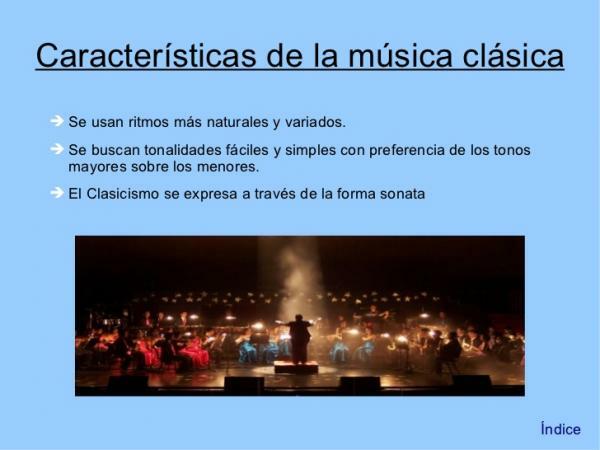
Image: Slideshare
Classical music was primarily a social and refinement event, performances were performed in the homes of families belonging to the aristocracy and in theaters that were completely.
In terms of formations, despite the fact that there were soloists, classical music stands out for being a collaboration between various interpreters. We can mainly divide the groupings into two classifications. First, the chamber music, which are small groups of generally 3 to 5 members with different instruments that played in small or medium-sized rooms.
The second classification is orchestral grouping, highlighting thesymphonic Orchestra which is for many, the exponent summit of classical music. Although the number of members varied according to the time and the work, the number of interpreters ranges from approximately 25 to 70 musicians, with specific works that even exceed that number.
The classical orchestra combines the timbres and textures of all types of instruments. The classical music instrumentsmost prominent are: string instruments (rubbed, pulsed and percussed), wind instruments (woodwind and brass) and percussion instruments (minor, major, in tune and without tuning).
If we mention the instruments individually, the most common would be: violin, viola, cello, double bass, piano, harp, horns (French horn), trumpet, trombone, tuba, piccolo, flute, oboe, clarinet, bassoon, timpani, tam-tam, bass drum, cymbals and suspended cymbal, marimba, xylophone and glockenspiel.
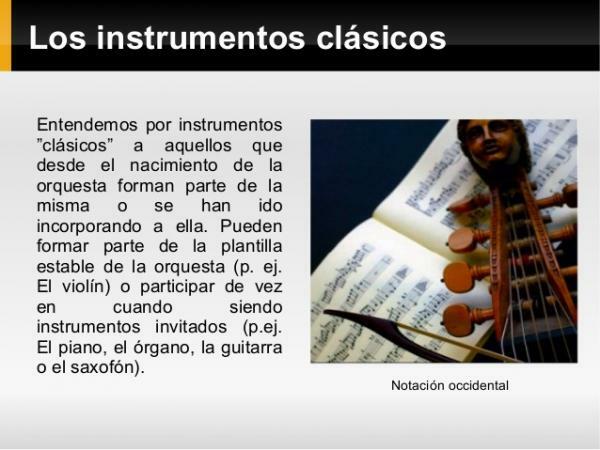
Image: Slideshare

